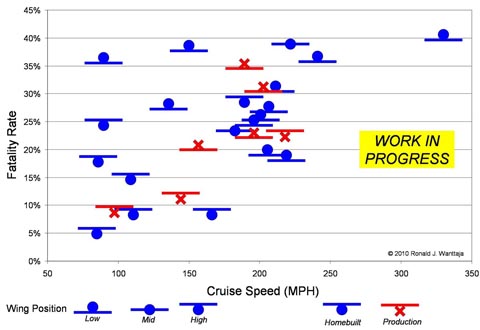wabower
Touchdown! Greaser!
- Joined
- Sep 1, 2008
- Messages
- 12,013
- Display Name
Display name:
Wayne
I have always thought the IV-P would be a perfect airplane for a T-38 instructor pilot who wanted to expand his horizons--but without a chute or ejection seat.
For me, the issue with the Lancair IV is the high wing loading which in turn leads to a high stall speed and/or anvil like glide characteristics if you get slow. This is an airplane with a low speed envelope more reminiscent of a WWII fighter than of your typical GA type. An inattentive pilot could get behind this airplane very quickly and have a bad day.



 This Henning guy is well traveled.
This Henning guy is well traveled.
